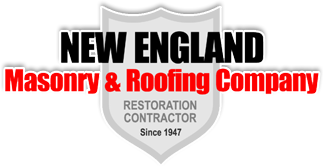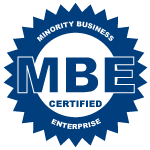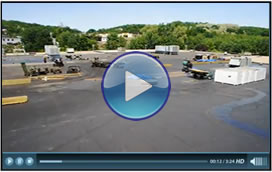Category: Commercial
EPDM Roofing Done Right – A Simple Guide for Commercial Property Owners

Making sure that the EPDM roofing is properly installed and maintained is crucial for commercial property owners to maximize the longevity and performance of their roofing system. Experienced roofers know exactly what is required to achieve this goal.
Here’s a simple guide to help you maximize the useful life of your EPDM roofing:
Choose a Qualified Contractor
Start by selecting a reputable Connecticut commercial roofing contractor with experience in installing EPDM roofing systems. Look for contractors who are licensed, insured, and certified by EPDM manufacturers.
Conduct Regular Maintenance
Regular maintenance is essential for preserving the integrity of your EPDM roofing system. Schedule annual inspections and address any issues, such as punctures, tears, or seam separations, promptly to prevent costly damage.
Protect Against Damage
Take steps to protect your EPDM roof from damage caused by foot traffic, falling debris, or extreme weather conditions. Consider installing walkway pads, snow guards, or roof coatings to enhance durability and longevity.
Monitor and Address Issues Promptly
Keep an eye on the condition of your EPDM roof and address any signs of damage or deterioration promptly. Early intervention can prevent minor issues from escalating into major problems and extend the lifespan of your roofing system.
Transitioning from a Sloped Roof to a Flat Commercial Roof in New England
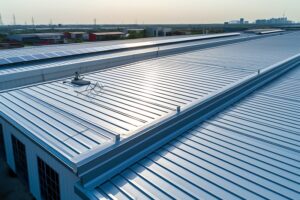
Imagine the picturesque landscapes of New England, where charming slopes define many residential roofs. Now, picture the need for a transition from that classic aesthetic to the sleek, modern appeal of a flat commercial roof. It’s a shift worth considering, especially if you want your building to become a competitive tool for marketing your business.
Of course, it’s not just about appearances. New England’s diverse weather patterns, from heavy snowfall to summer rains, make a flat commercial roof an appealing choice. Efficient drainage and easier snow removal become significant advantages. Plus, the additional space on a flat roof opens doors to potential rooftop gardens or solar installations, contributing to sustainability efforts.
Before you do anything, consult with a reliable commercial roofing Connecticut company who understands the local climate. They’ll guide you through structural adjustments, ensuring your building is well-equipped for the new roof style. Consider waterproofing measures, given New England’s precipitation tendencies. Flat roofs often require strategic sloping or proper drainage systems to prevent water pooling.
Adapting to New England’s ever-changing seasons also means factoring in insulation for both warmth in winter and coolness in summer. High-quality materials, like EPDM or TPO membranes, can enhance durability against extreme weather conditions and ensure that you don’t need as much roofing maintenance as with other materials.
While embracing a flat roof for practical reasons, you don’t need to sacrifice architectural charm. Explore design elements like parapet walls or incorporating materials that complement the traditional New England aesthetic, striking a healthy balance between functionality and visual appeal.
The Longevity of the Best EPDM Roofing Systems
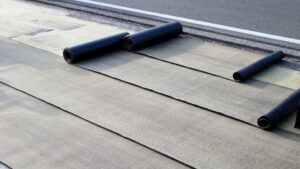
The roofing business witnesses a standout performer in the form of EPDM commercial roofing CT systems. Renowned for their durability and reliability, EPDM roofs stand as stalwarts against time, providing robust protection to structures in various environmental conditions.
The resilience of EPDM
- Weather resistance – EPDM roofing systems are crafted to withstand the harshest weather conditions, from scorching sun to cold. The material’s resistance to UV rays ensures it doesn’t succumb to sun-induced degradation over the years.
- Flexibility – EPDM exhibits impressive flexibility, adapting seamlessly to the structural movements due to temperature changes or settling. This flexibility is critical in preventing cracks and leaks, contributing to the roofing system’s longevity.
Cost-effective longevity
Investing in the best EPDM roofing systems translates to a cost-effective approach to long-term structural protection. The durability of EPDM reduces the frequency of repairs and replacements, providing businesses and homeowners with a roofing solution that stands the test of time without constant financial strain.
Minimal maintenance, maximum results
- Low maintenance requirements – EPDM roofs demand minimal maintenance, freeing property owners from the burden of frequent upkeep. Periodic inspections and cleaning are generally sufficient to ensure the continued performance of the roofing system.
- Resistance to mold and algae – EPDM’s resistance to mold and algae growth further reduces the need for intensive maintenance, contributing to a hassle-free roofing solution that remains aesthetically pleasing over the years.
Environmental stewardship
Beyond longevity, EPDM roofing systems align with environmental sustainability. The production process of EPDM is energy-efficient, and the material itself is recyclable, making it a responsible choice for those seeking durability without compromising ecological values.
Connecticut Commercial Roofing Concerns – Long Term Resilience and Roof Maintenance
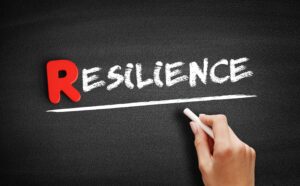
Connecticut commercial roofing contractors emphasize the importance of regular inspections. This includes both routine inspections performed by facility staff and more thorough professional commercial roofing CT inspections conducted by experienced roofing contractors.
Here are four important considerations:
1. Schedule Regular Inspection
Regular inspections help identify potential issues early on, preventing small problems from turning into major headaches. Identifying issues in their early stages allows for prompt and cost-effective repairs, preventing further damage.
2. Addressing Pooling Water as Soon as Possible
Contractors stress the significance of proper drainage, especially in dealing with pooling water. Connecticut experiences various weather conditions, and ensuring efficient water drainage is essential for preventing water damage and roof deterioration. Pooling water can lead to structural damage and compromise the integrity of the roofing system.
3. Create a Plan for Seasonal Preparedness
Roofing contractors in Connecticut often advise developing a seasonal maintenance plan that accounts for the specific challenges posed by each season. This includes preparations for winter snow loads, summer heat, and the potential for heavy rains.
Connecticut winters can bring significant snowfall. Planning for snow removal helps prevent excessive weight on the roof. In summer, extreme heat can impact the roofing material. Seasonal maintenance ensures the roof is prepared for temperature fluctuations.
4. Document Maintenance Activities
Contractors stress the importance of keeping detailed records of all maintenance activities. This includes regular inspections, repairs, and any modifications made to the roofing system. Comprehensive documentation provides a historical record and aids in tracking the roof’s performance over time.
Is TPO Roofing Better Than EPDM in Connecticut?

The choice between TPO and EPDM roofing membranes depends on various factors, including climate, installation requirements, and long-term considerations. Connecticut commercial roofing contractors share pros and cons of these materials.
TPO Roofing
Pros:
Reflectivity: TPO roofing typically has high reflectivity, which can help reduce cooling costs in warmer climates. This can be beneficial during hot summer months in Connecticut.
Energy Efficiency: TPO is known for its energy-efficient properties, contributing to a building’s overall energy performance.
Resistance to Algae and Mold: TPO has inherent resistance to algae and mold growth, which can be advantageous in humid climates.
Cons:
Durability: While TPO is durable, the long-term performance can be influenced by the quality of the material and installation. Some lower-quality TPO membranes may experience issues such as seam failures.
Cost: TPO roofing materials can be more expensive than EPDM, depending on the specific product and manufacturer.
EPDM Roofing
Pros:
Proven Track Record: EPDM has a long history of successful use in various climates, including colder regions. It has a proven track record for durability.
Resistance to Weathering: EPDM is known for its resistance to weathering, UV radiation, and ozone exposure.
Cost-Effectiveness: EPDM roofing materials are often more cost-effective than TPO, making them an attractive option for budget-conscious projects.
Cons:
Dark Color: EPDM is typically available in dark colors, which can absorb heat. In hotter climates, this may lead to higher cooling costs.
